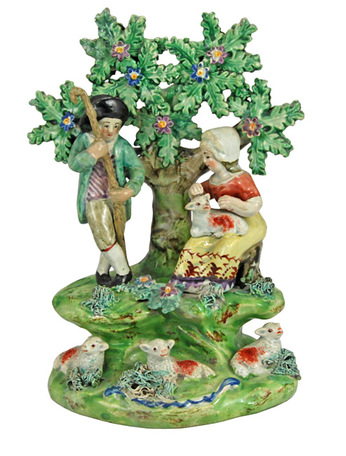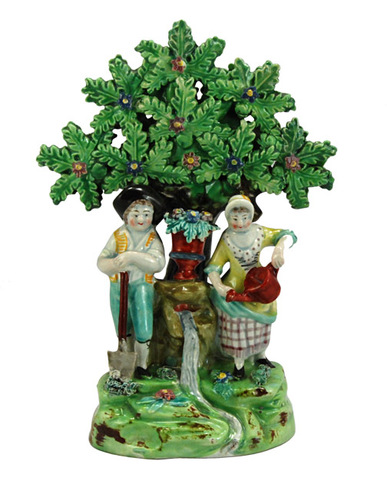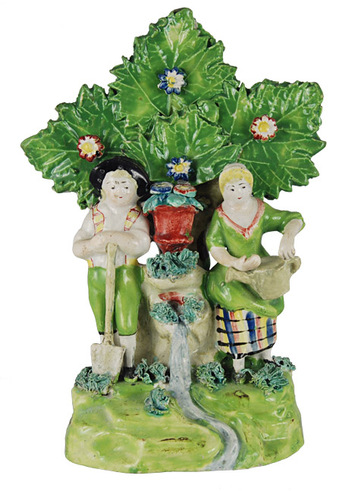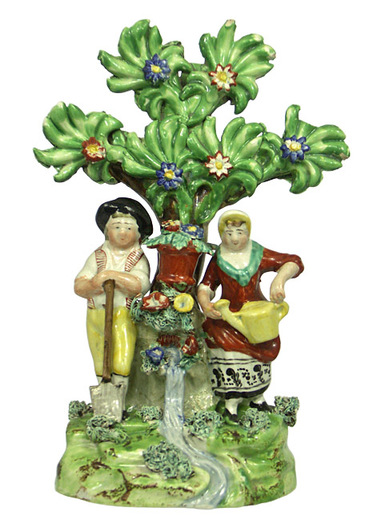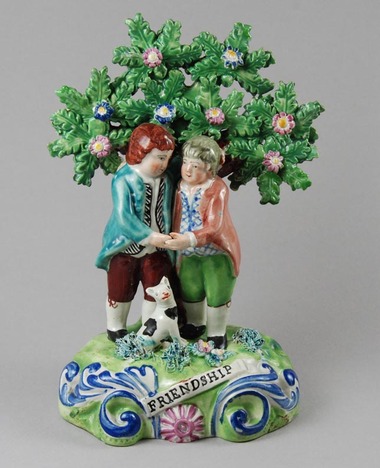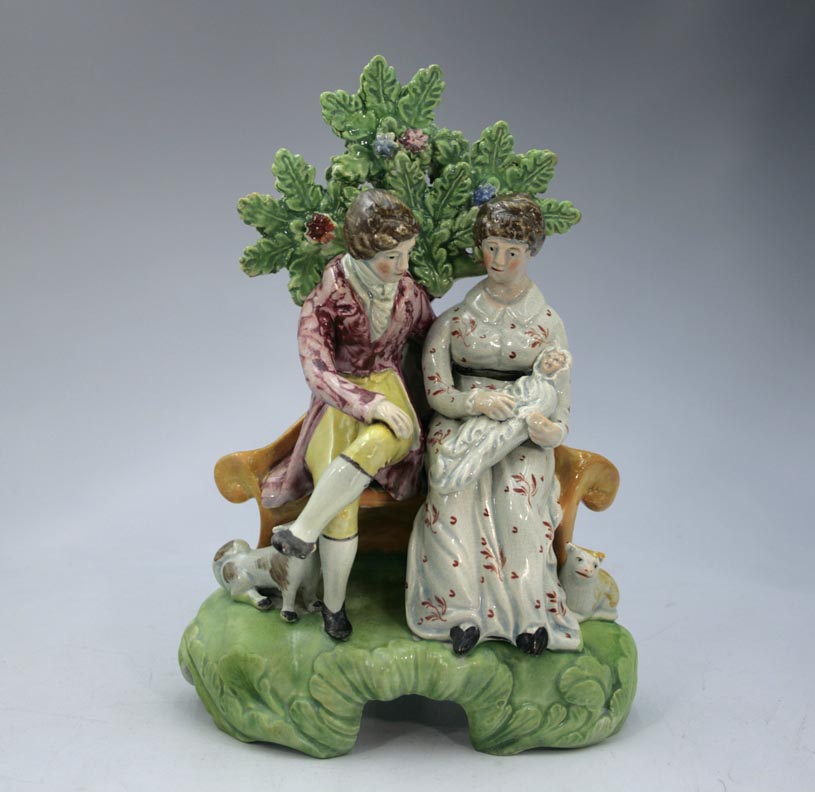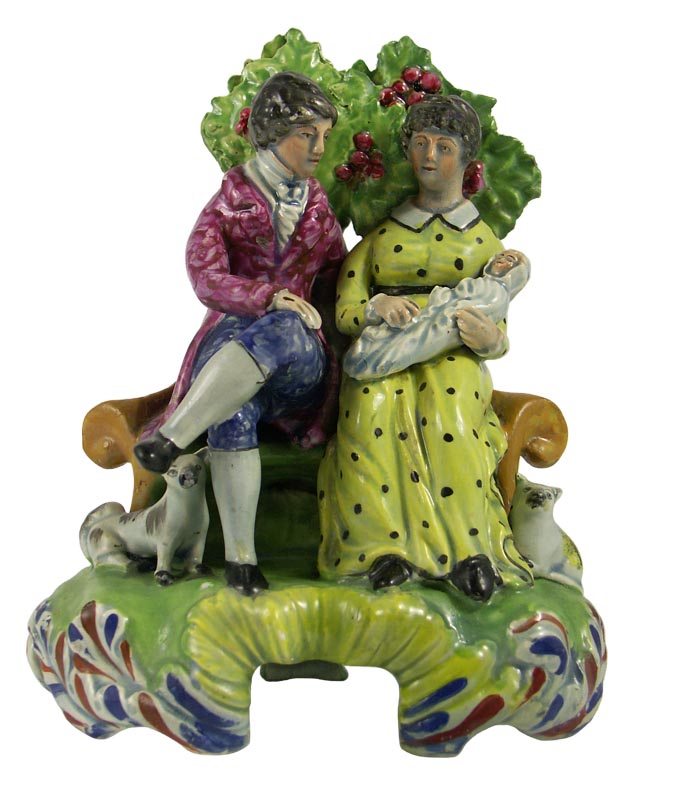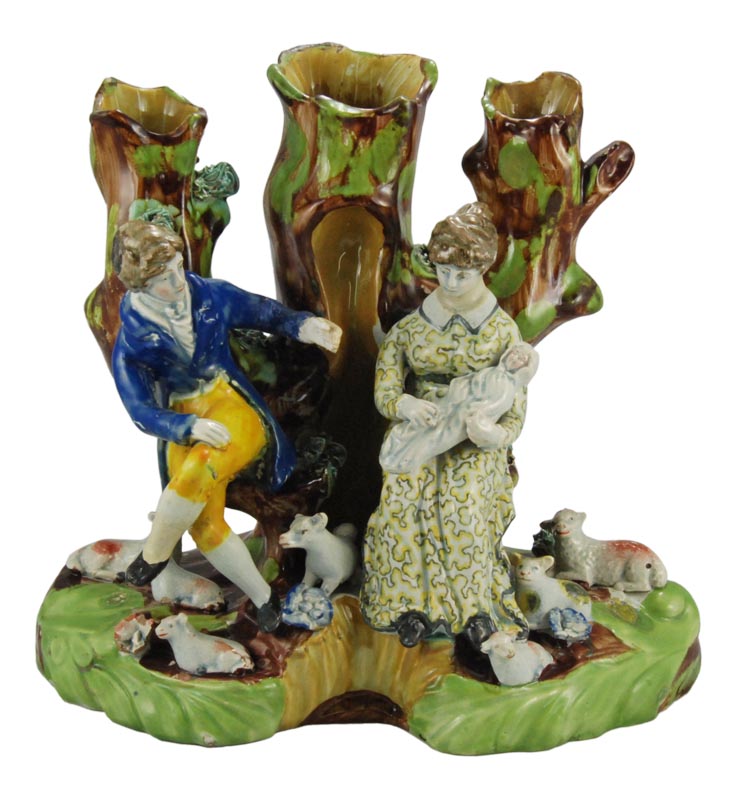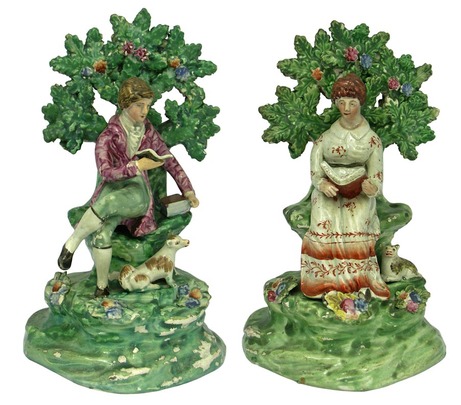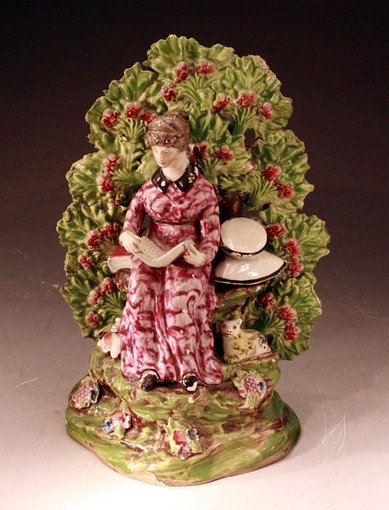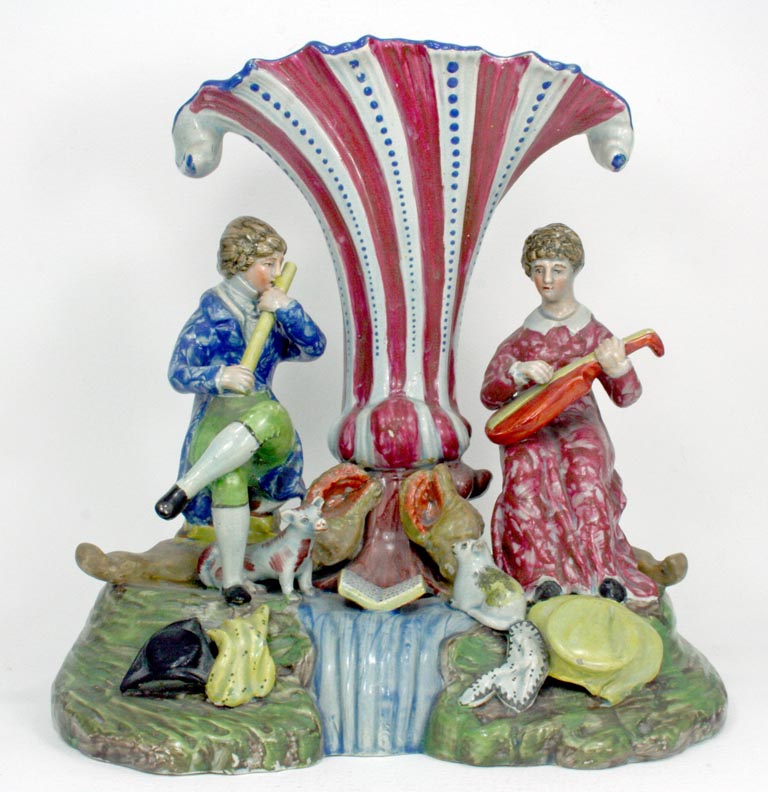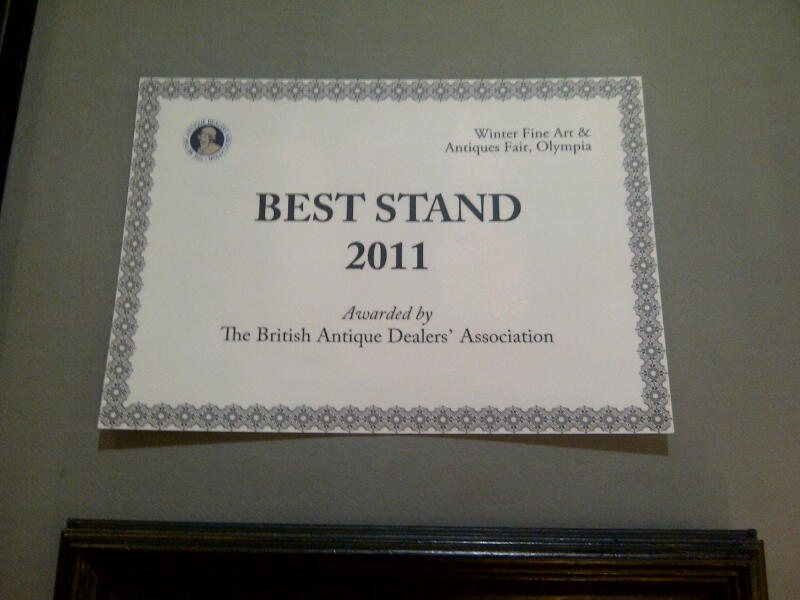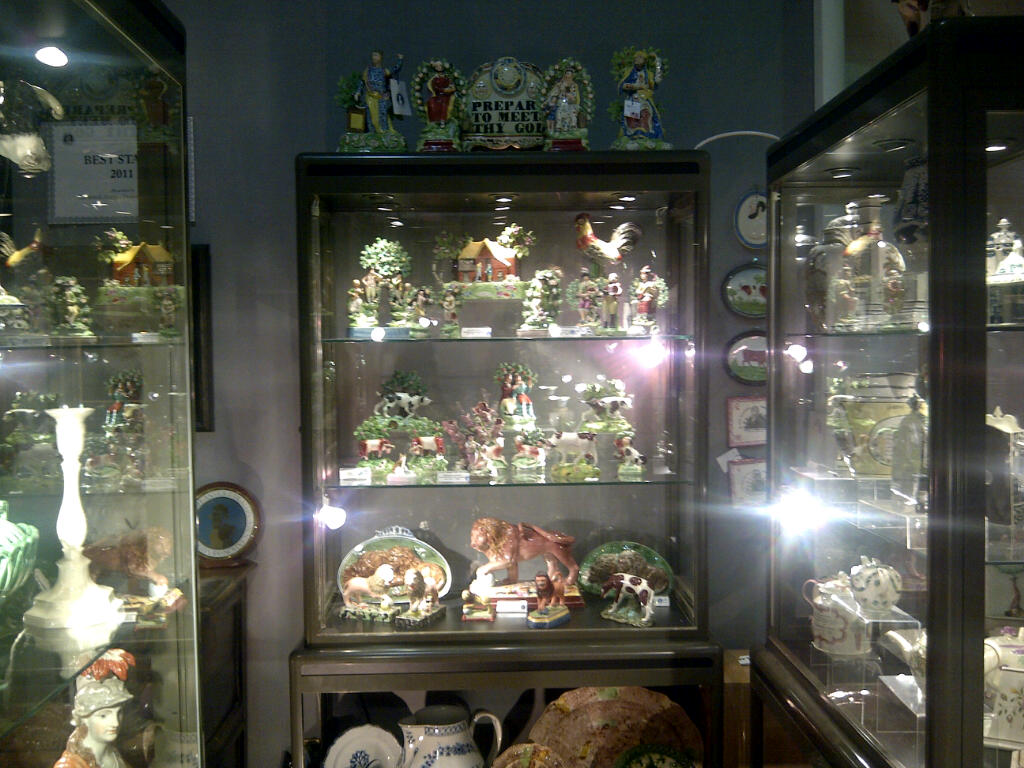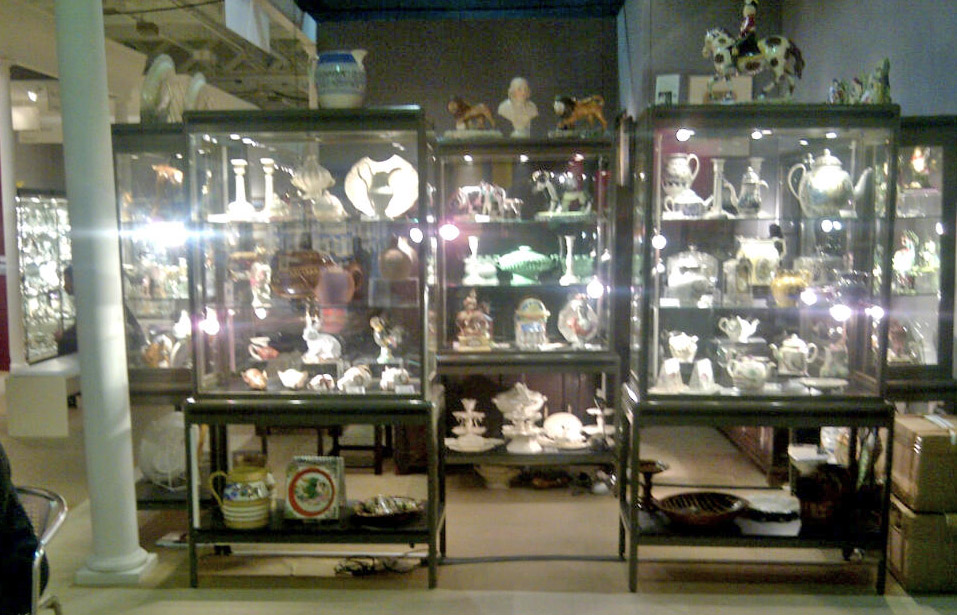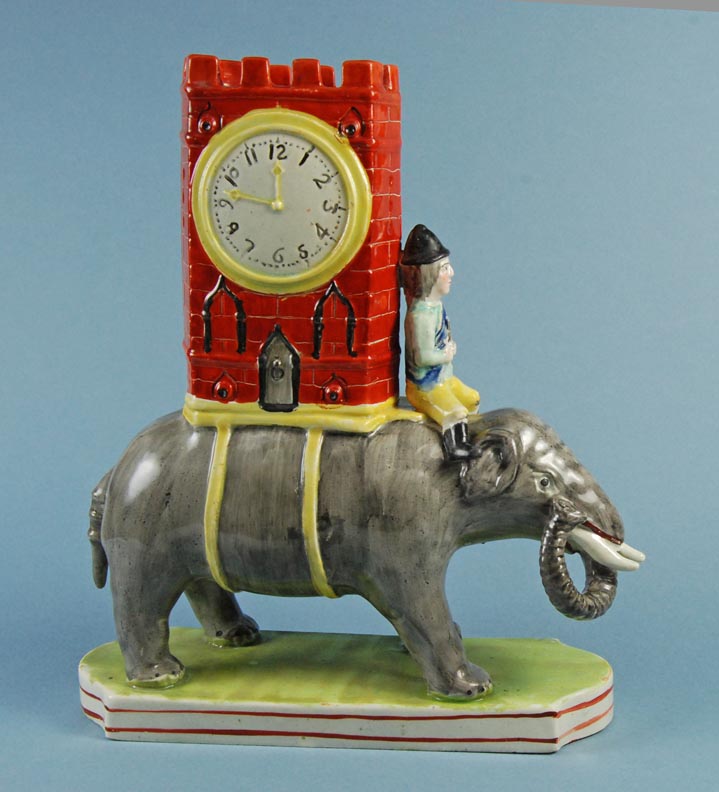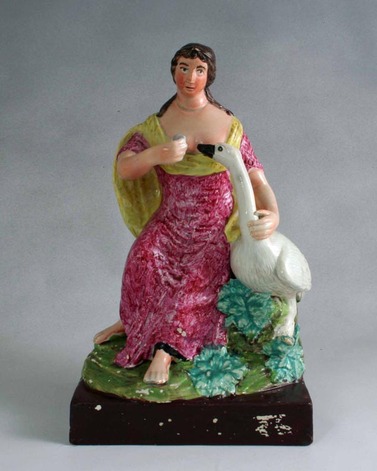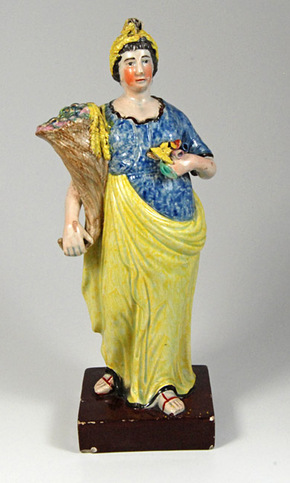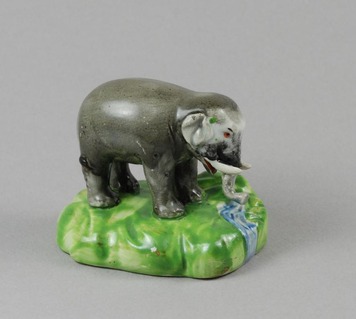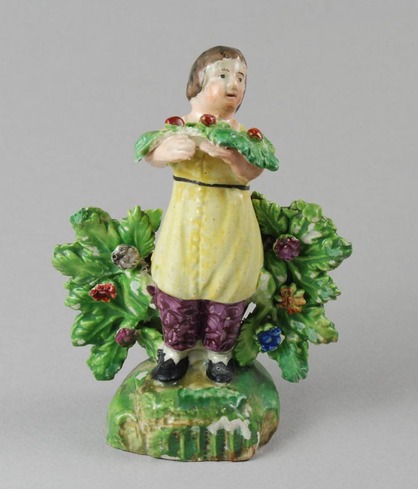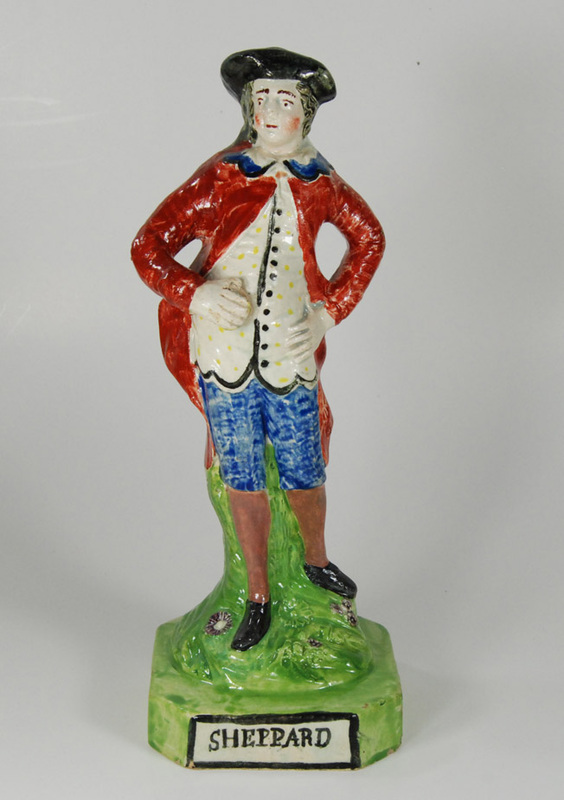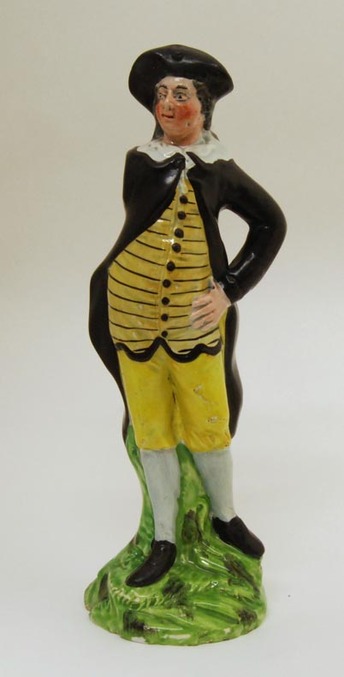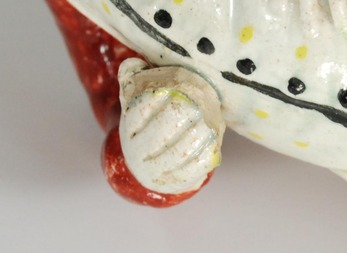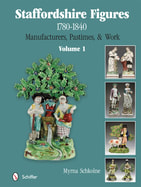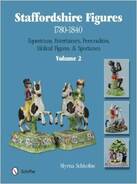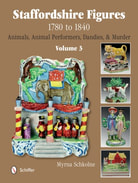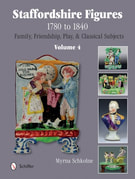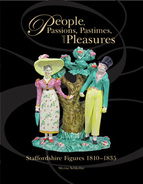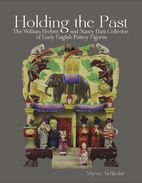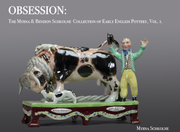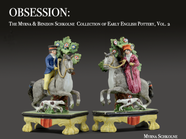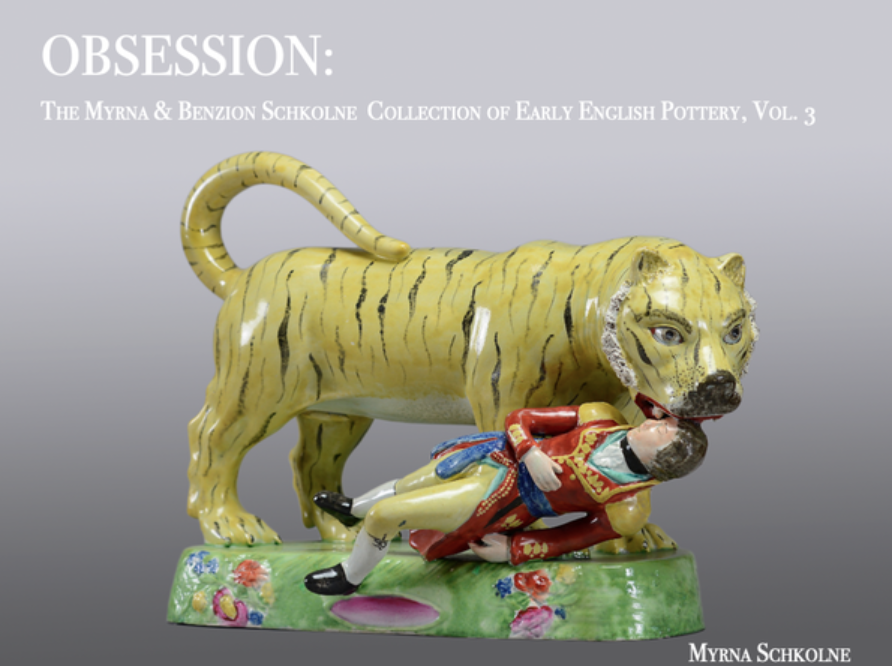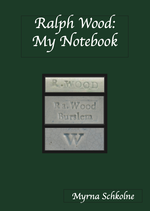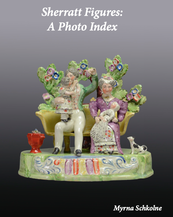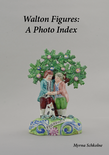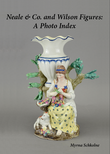How about this one? Same group again, but with yet another bocage!
Let's keep trying. Here we have one final candidate for a Walton attribution.
Come, come, Myrna. These groups all look so like marked Walton groups. Aren't you being too harsh? I think not. My pet peeve (or peeve of the week....I have lots of peeves) is the way the Walton name gets slapped on anything with a bocage. John Walton made more marked figure forms than did any other potter--in fact, he made over 80 figures and groups. If you could show me a gardening group like one of those above and with the WALTON mark on it, I would concede that John Walton just may have made the three gardening groups above. But until one shows up, there is nothing specific to link these groups to Walton.
There is only one feature on Walton figures that seems to substantiate an attribution. Look at the pink rosette in the base of this group, center front.
While you are looking at FRIENDSHIP, above, note the little dog. Walton dogs always look like that, so if you see a little spaniel or some other pooch on a Walton figure, suspect restoration. I do think this group is delicious...but then I too am always a sucker for a great bocage.
As for the three gardening groups....I am not convinced they were necessarily even made by the same pot bank. But oh, how I would love to know.
